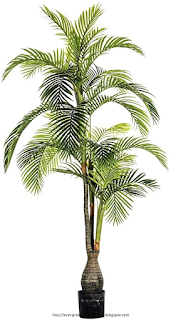How To Have A Fantastic Gardenia Radicans Bonsai Care With Minimal Spending.
"I've got a blooming bonsai tree, which was covered in leaves from the previous year. We should Gardenia Radicans Bonsai Care. It's still in the bowl, I had no plans in the street when I was living in an apartment. As a rule, in the summer, I put it on the street, and in the winter I bring it into the house. However, right now I'm just wondering if anyone part of the tree is alive, it has no leaves, and it is, on the one hand, there are full of new green leaves. It is currently housed in the winter is here. I just clip it to one side of the main branch and the leaves begin? Or wait until the spring to see what's going on?" Ask for Amy, Madison, Wisconsin.
 |
| Gardenia Radicans Bonsai Care |
Gardenia Radicans Bonsai Care
The answer is that It seems that several units of gardenia is dead. In order to test this, they feel, the twigs, and buds, and carrying a few gentle scratches to be found in green living tissue under the bark. If the shoots and buds are dry and brittle, and they are the most likely to die. If the scratch test is a test that doesn't show a living green under the bark, they don't live and be brought up to the point of a living body. Prune only dead branches. The Live branches will not need to be pruned during the winter, but it needs to be pruned immediately after the plants are in bloom at the end of the season.
How To Have A Fantastic Gardenia Radicans Bonsai Care
Gardenia flows into the Instagram during the winter, so they need special care. There are a few things that you can make for your bonsai gardenia highlights, so let's take a look at what the potter's Instagram needs to get over the winter to survive in good health.
The high moisture content of the tiles under the plant it in a moist state, it must provide a sufficient level of humidity. Humidifiers can also be used. Also, keep the plants away from drying, heating, ventilation, etc.).
The cool night temperature: Gardenia prefers a cold night, with temperatures ranging between 55 and 60 degrees c in the winter, and during the day temperatures of between 65 and 70 degrees Fahrenheit.
Of course, they can filter out the sunlight, turning the plant every week, and if you have sun, it is only one side of it.
See more: Best Flower Online Introduction Tips You Will Read This Year
Low water levels In the winter, so the plant dries between waterings. The surface must be dry in order to be at least 2 inches for the water. A rich soil will lead to root rot and plant death, especially during the winter months. When transplanting, be careful drained swimming pool, mixing, and if of the is versatile, the molded-in label is in Black, Gold, for All intents and purposes.)
Do not fertilize the plant in the winter, because they are actively growing.
Make sure that your plants from pests: spider mites, and whiteflies are the two most common pests that attack the leaves, resulting in stress and the plant dropping leaves. Make sure that there are no black dots (Instagram mites and so on), or minor, under the leaves to fly. When you see them, be sure to wipe the leaves occasionally with a damp cloth and the plants with insecticidal soap.
Follow these steps, and the live parts of the plant are required to pay. Please keep me informed of his kick!
 |
| Gardenia-Radicans-Bonsai-Care |
Get Gardenia Radicans Bonsai
Bonsai Gardenia is one of the best-loved and most complex plants. The pretty, dark-green, oval, waxy foliage and fragrant smell that beautiful cream flowers of a Mature Gardenia is the perfect item to have in your home or as a gift, for a unique and unique gift for your family members and friends. Some breeders will find a bonsai Gardenia's hard-to-grow, this is a great opportunity for anyone who wants to take the time to be devoted to their needs. Bonsai Gardenia is native to southern China and Japan, and is beautifully illustrated in the arts of this region for centuries. Each live plant is a specialty certification, as required by the united states Department of Agriculture.
Technical Specifications
CONTENTS: Bonsai, Decorative Container (Assorted Colors And Styles), Soil, Care Instructions.
TYPE: Bonsai Gardenia is an evergreen shrub with abundant white or cream-colored flowers, which are solitary or form in small attractive communities. Lots of gardenias have a very strong smell, which is surprising to most, but it can have an adverse effect on people with asthma and allergies.
AGE / SIZE/CARE: use A very large and 6-year-old tree that grows to between 10 and 14 inches high with a 12-inch container, and it will work out for the best outdoors (see detailed instructions in the pics).)
 |
| Gardenia-Radicans-Bonsai-Care |
BLOOM: in The tree, it will flower from May until the end of July.
WARRANTY: our bonsai tree has been grown in a state-of-the-art greenhouse under carefully controlled conditions to achieve optimum health. If for any reason you are not completely satisfied with your place of work or our service, please let us know within 30 days of the date of receipt. We can use the situation to your satisfaction.






